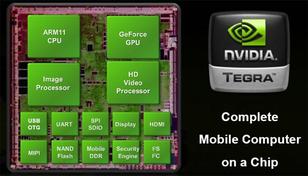CPRI Line Rates Explained: Rate-1 to Rate-10
Understand CPRI line rates, including rates 1-10, line bit rates, coding, and transport capacity for WCDMA and LTE AxC.
Showing 20 posts (Page 32 of 162)
Advertisement
Understand CPRI line rates, including rates 1-10, line bit rates, coding, and transport capacity for WCDMA and LTE AxC.

Explore the differences between CPRI and eCPRI, focusing on their application in 5G networks, architecture, and advantages in mobile communication.

Explore the differences between CPUs, DSPs, and FPGAs, including their architecture, programming models, performance, and suitable applications.

Explore the core differences between CPUs and GPUs, including their architectures, parallel processing capabilities, and application in SoCs.

Explore the benefits and drawbacks of Cloud RAN (CRAN) technology, including faster deployment, reduced costs, and high fronthaul capacity requirements.

Understand the difference between cross modulation and intermodulation in RF systems, including causes, effects, measurement, and applications.

Explore the pros and cons of Crossed Field Amplifiers (CFAs), including their high efficiency and wide bandwidth, alongside limitations like low gain and high noise output.
Explore cryogenic RF components, their advantages like ultra-low noise, typical applications in quantum computing and MRI, and a list of manufacturers.

Learn about crystal detectors, their circuit configurations, characteristics, and mathematical relationships. Discover how they are used in RF and microwave applications.
Explore the distinctions between crystal filters and ceramic filters, focusing on their design, applications, and key differences in size, cost, and performance within communication receivers.
Understand the core differences between crystal oscillators and frequency synthesizers, their features, applications, and how they relate to each other in RF systems.
Explore the differences between crystals and resonators, including accuracy, stability, size, cost, and applications as clock sources in electronic circuits.

Explore the distinctions between CSMA and MACA protocols for medium access control, focusing on collision handling and addressing hidden/exposed terminal problems in wireless networks.

Explore the differences between CSMA-CD and CSMA-CA, protocol mechanisms used in wireless systems to manage and utilize the wireless medium efficiently.

Understand the differences between CT and CBCT scanners, including how they work, their advantages, and disadvantages. Learn about beam shape, radiation dose, and more.
Explore the distinctions between CT0, CT1, and CT2 analog cordless telephone standards. Understand frequencies, duplexing, access types, and modulation.
CTCSS and DCS are signaling systems used in walkie-talkies to reduce interference and filter unwanted transmissions, enabling clearer communication. CTCSS uses analog tones, while DCS uses digital codes.
Explore the key differences between CUDA and OpenCL for parallel computing, including features, vendor support, and use cases to determine the best choice for your needs.

Explore the differences between current and voltage sources, including ideal vs. practical behavior, internal resistance, and real-world impacts.
Understand the differences between current transformers (CTs) and voltage transformers (PTs), including connection, winding configurations, and use cases in AC systems.
Advertisement